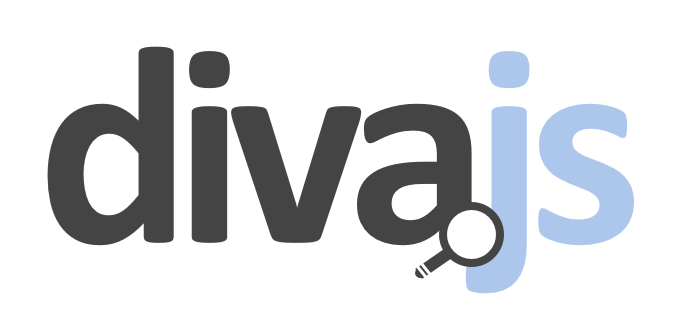-
Notifications
You must be signed in to change notification settings - Fork 40
Home
Diva.js is an open-source document image viewer, especially suited for use in archival book digitization initiatives where viewing high-resolution images is a crucial part of the user experience. Using Diva, libraries, archives, and museums can present high-resolution document page images in a user-friendly “instant-on” interface that has been optimized for speed and flexibility.
Version 5.0 contains many new features and improvements:
- Page images are now rendered using the HTML Canvas, allowing us to support “smooth” zooming.
- Improved IIIF support: Easily toggle “non-paged” pages' visibility and search for pages based on their label name.
- Complete re-organization of the source code. We now use ES6, WebPack, and Karma. This makes both the development process and code debugging much easier.
For a complete list of new features, bug fixes and API changes, view the changelog.
To browse through the pages within a document, simply scroll through the document panel using the scroll wheel, the scrollbar or the arrow keys. To zoom in, either click the plus button or double-click the page you are viewing. To zoom out, click the minus button or hold control while double-clicking the current page. Note that on a touch screen, the usual touch gestures will work to zoom-in, zoom-out and scroll. Change views and enter fullscreen mode by clicking the icons above the viewer pane on the upper right.
Try a demo installation here.
There are two main components to a Diva.js install:
- An image server: IIPImage or IIIF-compatible server. The image server will send the images of the documents to Diva.js.
- The Diva.js viewer itself. Diva is embedded in your web page and displays the images.
If using IIP Image Server, you will need to configure your web server (Apache, Nginx, or similar) to serve JSON files to the viewer. For a complete guide, see Installation.
 Description
Description